
Chamomile happens to be one of the oldest medicinal herbs known to man, referenced on ancient Egyptian papyrus as far back as 1550 BC, according to Traditional Roots, and yet most of us poke it in the corner of our garden and then wonder what the heck to do with it when it starts to grow.
Lucky for you, I’ve got a few ideas to help you put this time-tested herb to use.
About Chamomile
These days most home gardeners grow either German or Roman chamomile. Both are easy to get started and will happily grow fuss-free in full sun. Chamomile doesn’t need to be watched over, watered all the time and fertilized like many plants, so it’s a great herb for new gardeners.
And at the end of the day, if you don’t do a thing with the flowers, it still makes an excellent companion plant to brassicas and a home for many native pollinators.
If you want the low-down on how to grow and harvest this delightful plant, you can read all about it here.
But what do you do with all of those cheerful white and yellow flowers once they begin to bloom? Plenty! Together we’ll take a look at some of the ways you can put this easy-to-grow herb to good use around your home.
Of course, the most widely known use for chamomile is as an herbal tea. We’ll start there as it’s the best place to make a case for adding chamomile to your tea garden.
1. Chamomile Tea
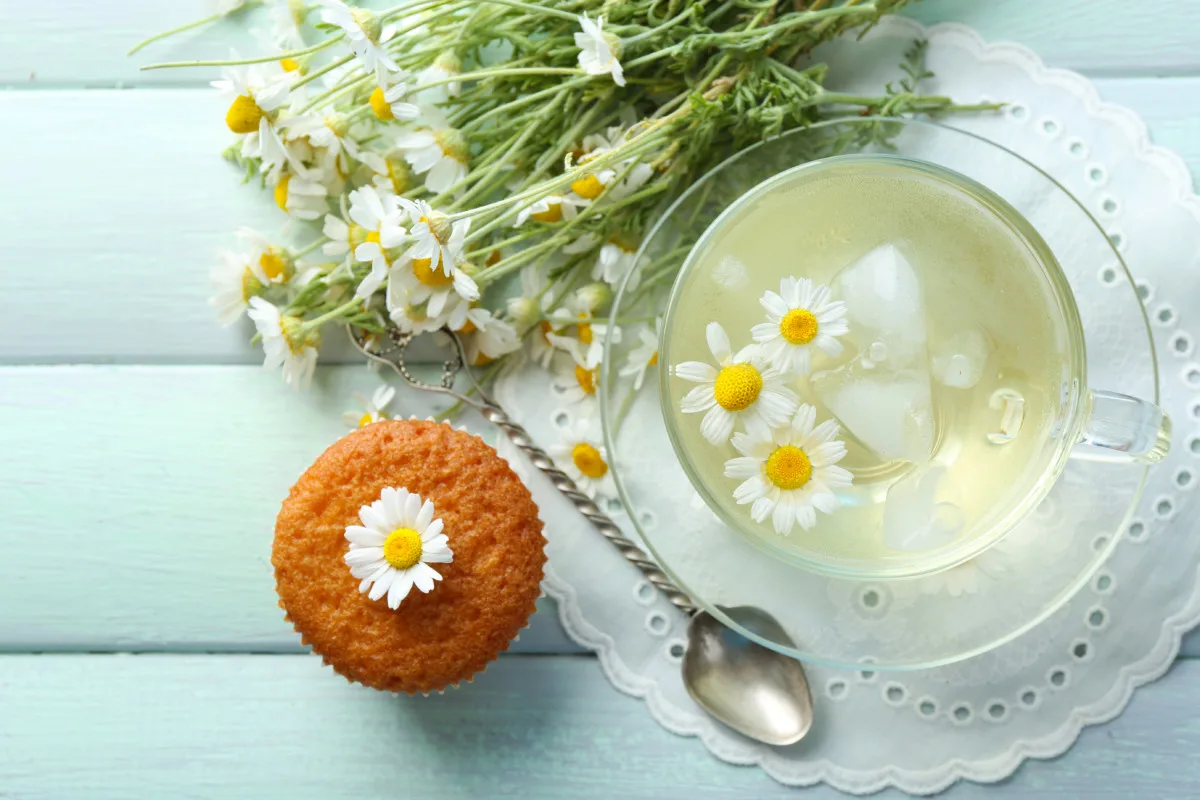
For some, the thought of chamomile tea probably conjures up a picture of a Birkenstock-clad hippie with flowers in their hair, but this popular herbal tea has been around for centuries. If you recall Beatrix Potter’s Peter Rabbit, even Peter’s mother believed in its soothing and healing powers.
While humankind (and English rabbits) has been sipping chamomile tea to treat various ailments for ages, it’s only been in the past couple of decades that the scientific community has bothered to take a look. And the results have been surprising. (Well, not surprising to those who already drink chamomile tea.)
Let’s take a look at some of the research findings.
One of the most well-known reasons to sip a cup of chamomile is to help you sleep. This popular herb is often included in commercial bedtime tea blends. While much of the evidence is anecdotal, some studies do show chamomile can help you get to sleep, even if science hasn’t pinpointed why yet.
Inflammation seems to be everywhere in scientific literature these days. The more we study, the more we find that inflammation seems to be the root of many health issues. It’s no wonder more people are looking for anti-inflammatory foods. And with chamomile’s anti-inflammatory properties, this simple tea is an excellent candidate for an inflammation-reducing diet.
Apparently, sipping chamomile tea every day for a month led to less menstrual pain and anxiety for women in this study. It’s not surprising given chamomile’s calming and anti-inflammatory properties.
There’s even hopeful evidence from a 2008 study that chamomile can help those with diabetes by maintaining blood sugar levels.
Of course, we can’t forget what Peter’s mother knew way back in 1901 when The Tale of Peter Rabbit was first published, and that’s how well chamomile tea helps to soothe an upset stomach.
There have even been studies involving chamomile’s effects on cancer, depression, anxiety, osteoporosis and other ailments. And while many of those outcomes suggest more research is necessary, we can sip our chamomile tea while we wait for the science to catch up.
Naturally, you didn’t come here to be told to drink more tea. While it’s the quintessential way to enjoy chamomile, it’s only the tip of the iceberg.
2. Delicious Chamomile Jelly
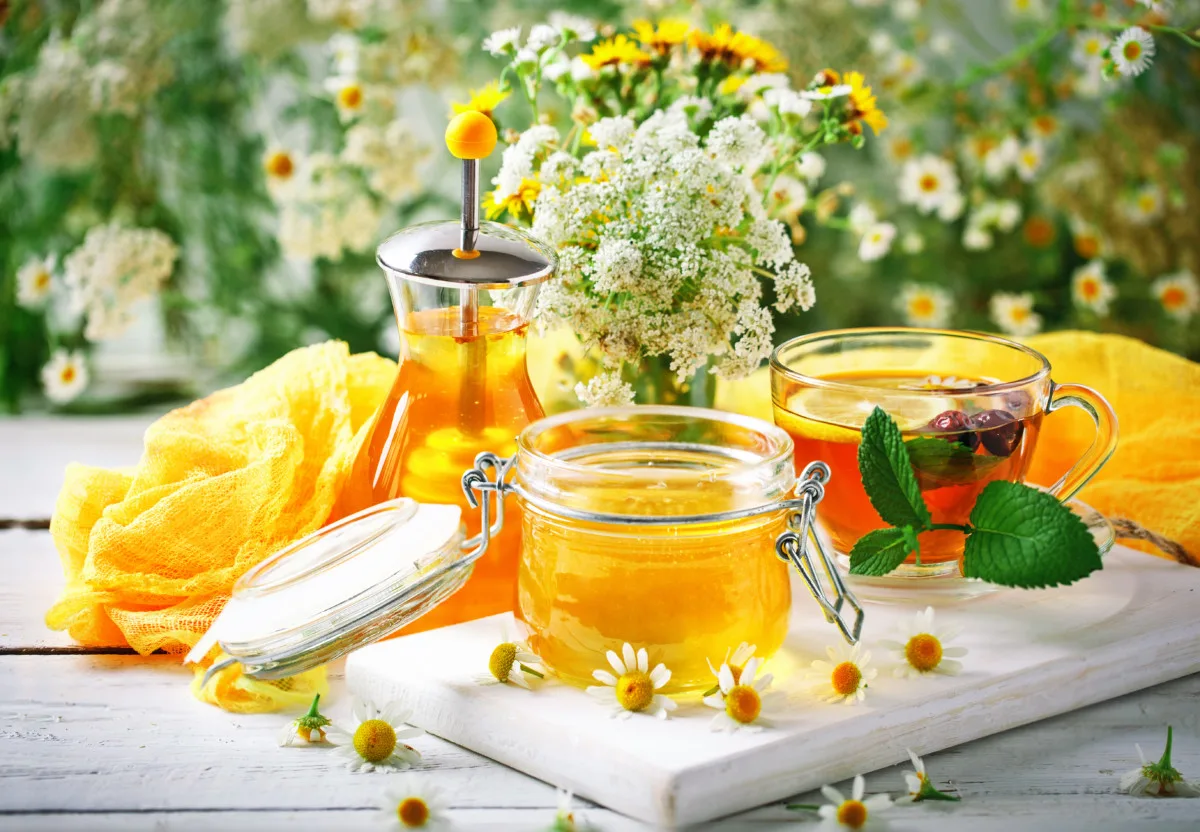
Move over strawberry jam; there’s a new topping for those homemade scones. Take your teatime plans to a whole other level with homemade chamomile jelly. Not only is this wonderful on freshly-baked scones, but it makes an amazing spread served with a cheese board or charcuterie, where its lightly floral flavor can shine.
This easy jelly recipe makes an impressive gift for the tea-drinker in your life. Add a jar of dried chamomile blossoms from your garden for tea, and you’ve got an incredibly thoughtful gift.
3. Springtime Chamomile Cookies
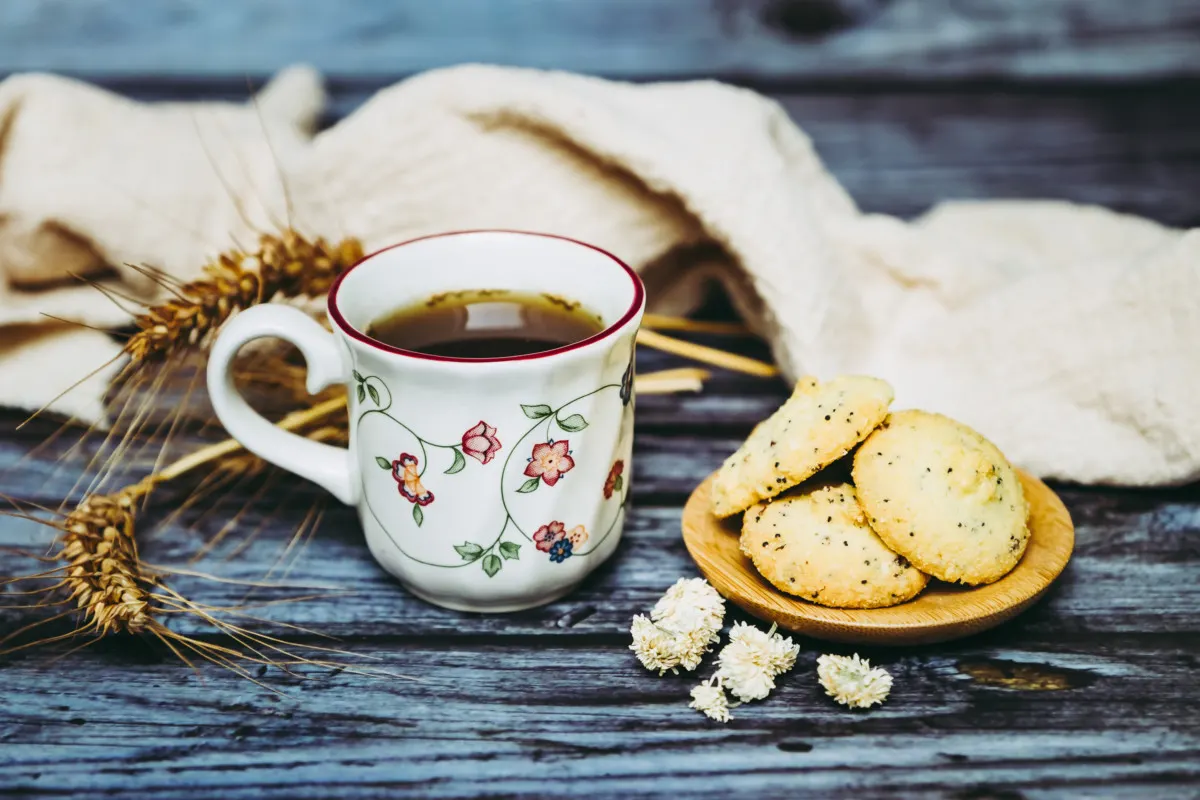
A light, delicate flavor makes these the perfect springtime treat to share with friends over a pot of tea. If you’re lucky enough to have fresh chamomile in the garden, don’t forget to press a few fresh flowers into each cookie before baking them for a simple yet beautiful garnish.
These are perfect for those spring days when the garden is starting to come alive, but before the heat arrives.
4. Homemade Chamomile Cordial
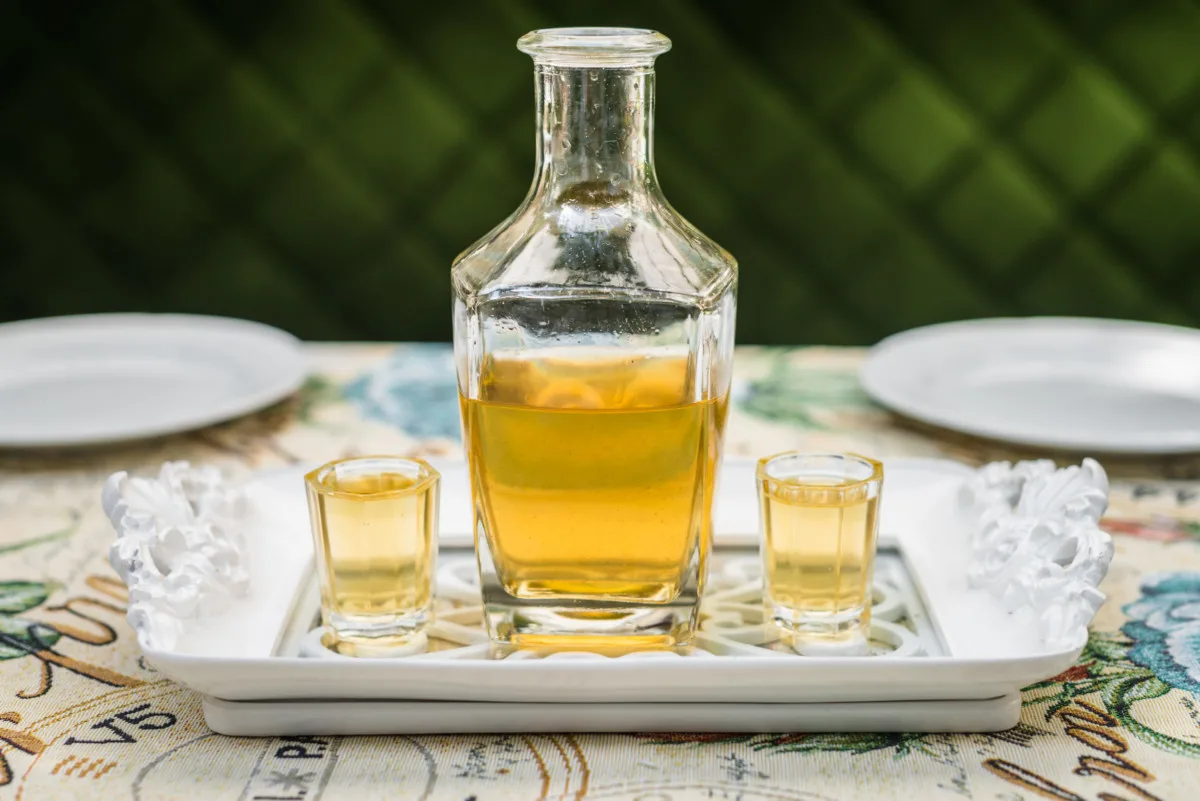
If you enjoy making things like elderflower champagne each spring, you’ll want to add chamomile cordial to your list.
Chamomile makes the perfect cordial, relinquishing its fresh, apple-scent to the alcohol and imbuing it with a delicate floral flavor. If you want a refreshing cordial that can be the start of many a warm-weather cocktail, look no further—homemade chamomile cordial ticks all the boxes without being overly flowery.
5. The Perfect Chamomile & Gin Cocktail
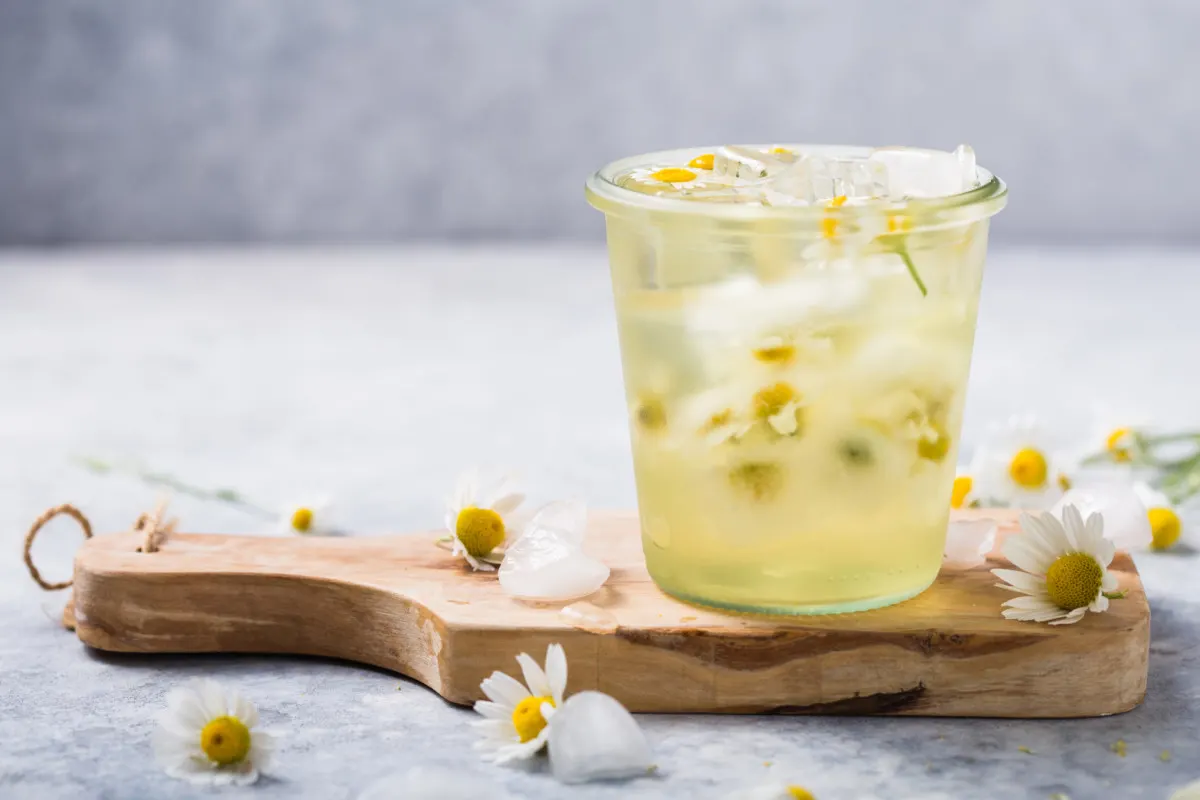
Chamomile and gin – a match made in heaven. This great batch cocktail is perfect for serving at your first spring party of the year. It’s impressive enough for the fanciest dinner party but is deceptively easy to make.
While the recipe is meant for a batch cocktail, it’s easy to pare it back for a cocktail for two and an evening relaxing on the patio.
6. Decadent Chamomile & Honey Ice Cream
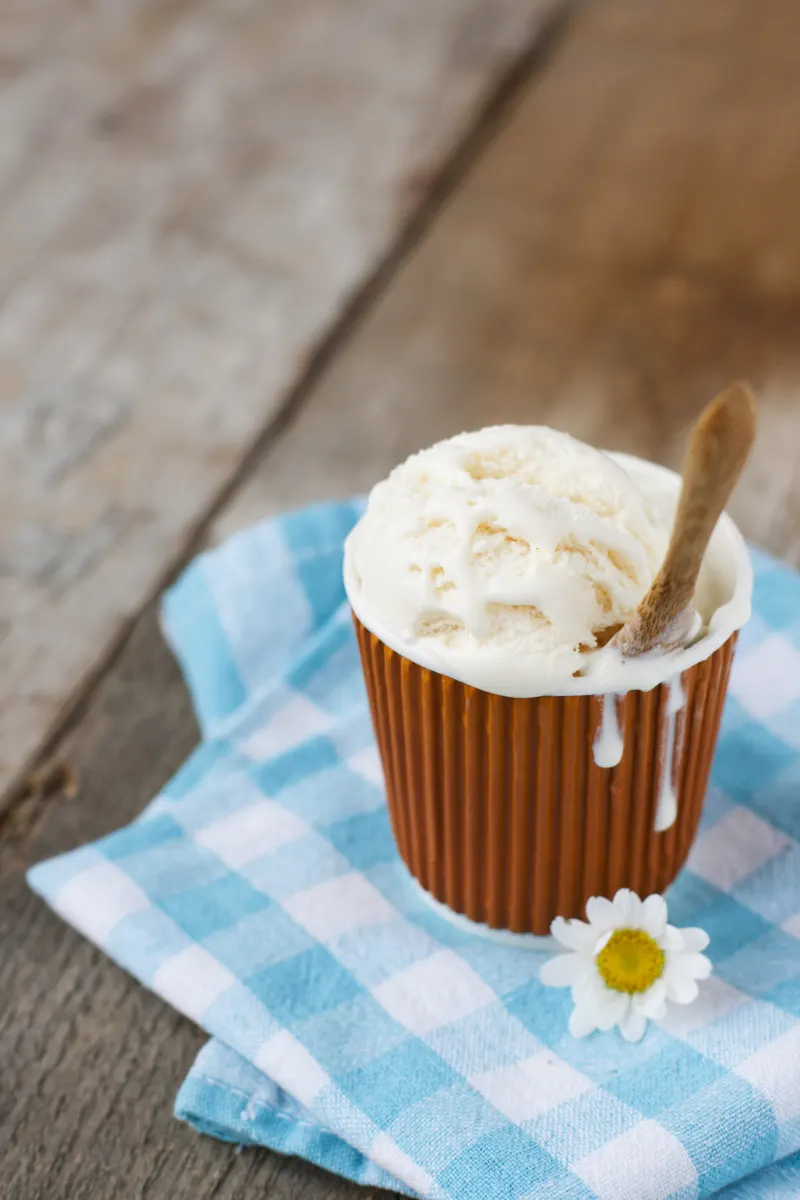
Nothing says summertime like ice cream, except for maybe watermelon. When you’re tired of all the traditional flavors and ready for something different, give this flavorful chamomile and honey ice cream a try.
I think it would be the perfect dessert to accompany cake at an adult birthday party—a grownup twist on a classic party theme.
If you really want to dive into some cool summertime treats, check out these incredible popsicles.
You can do more with chamomile than eat it. Chamomile is wonderful for your skin too.
7. Easy Chamomile Infused Oil
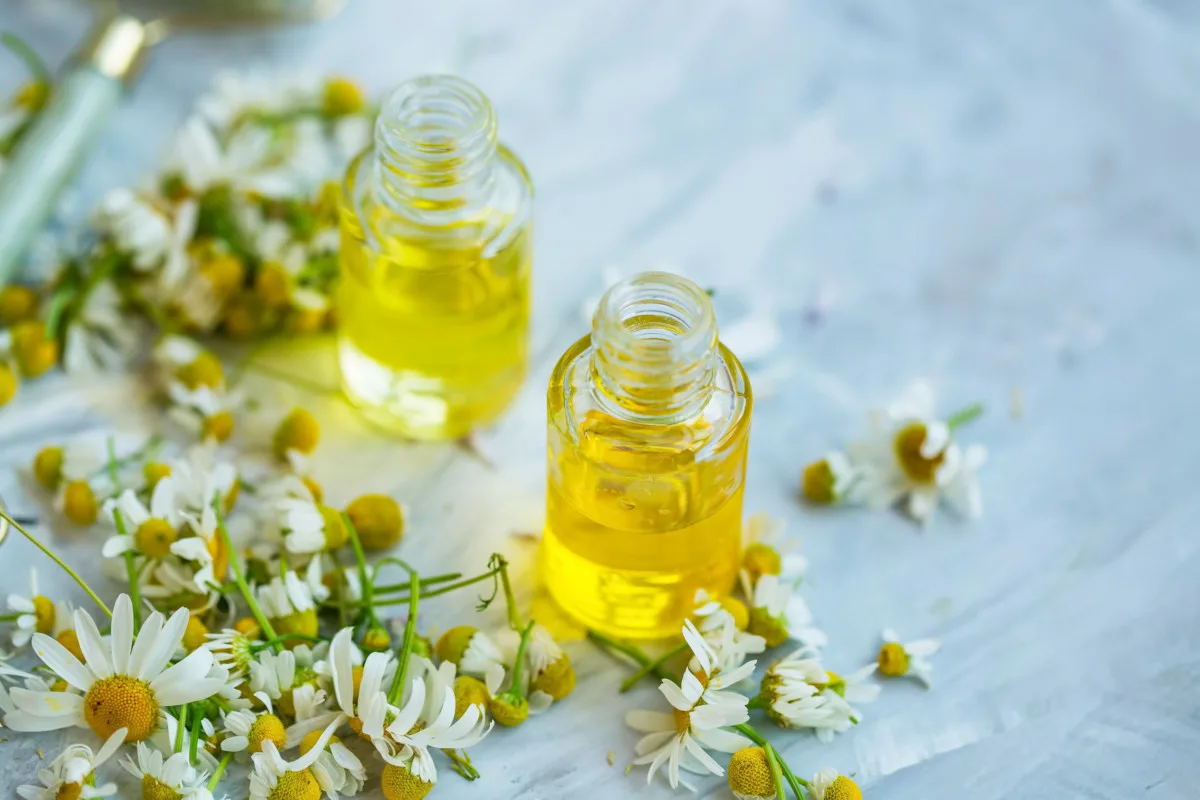
A good herb-infused oil is often the foundation for many lovely home skincare treatments. So, we’ll kick off this section of our list with the base of all good things – chamomile-infused oil. While this recipe calls for avocado, almond oil works beautifully with chamomile as well.
You can use this oil on its own to soften skin, remove makeup or treat dried-out tresses, but it’s also a good infused oil to add to all of your favorite skincare recipes. There are so many skin-nurturing benefits of chamomile.
- Antibacterial and can help treat acne
- Anti-inflammatory – soothe red, sensitive or sunburned skin
- Chamomile contains polyphenols known to help with anti-aging
Just to name a few.
8. Deep Moisturizing Chamomile Lotion
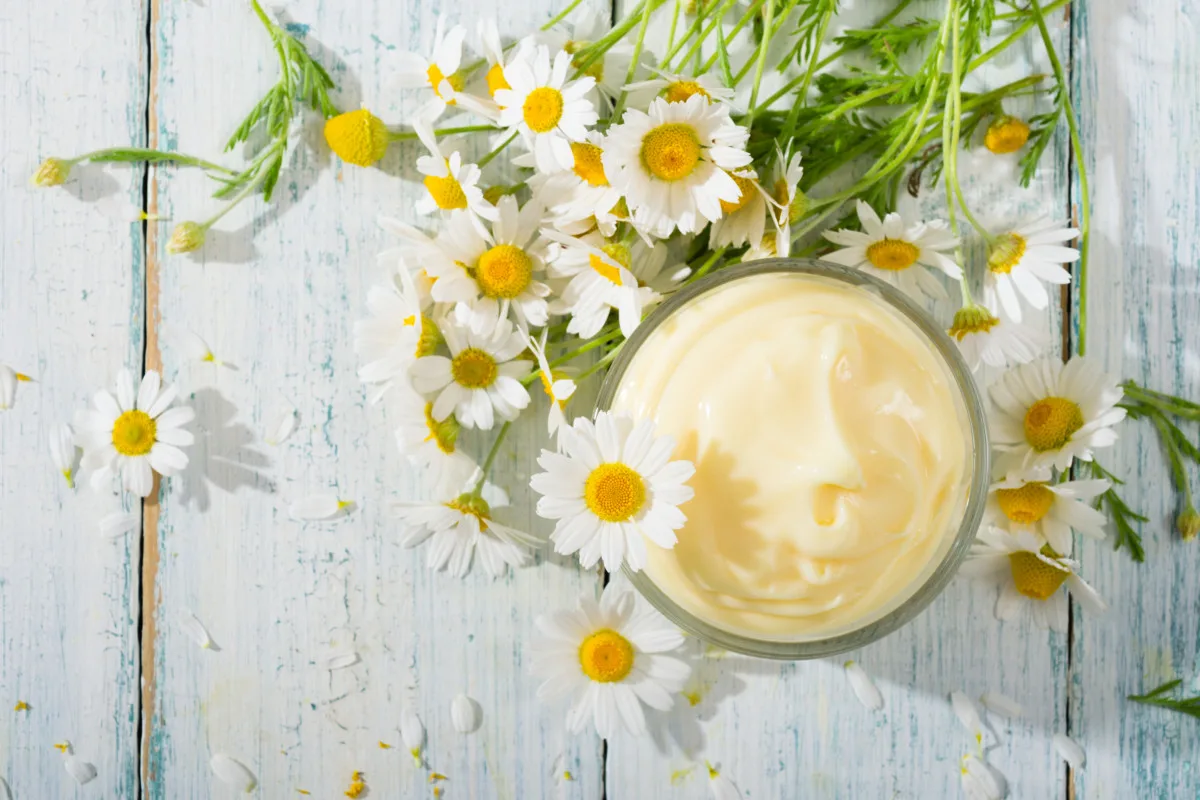
Skip the beauty counter moisture creams with their ingredient list filled with things you can’t pronounce. Get back to basics and treat your skin to the healing benefits of chamomile lotion. Finish your evening skincare routine by sealing in moisture with this lovely lotion, and your skin will thank you.
Don’t forget to slather some on those hard-working hands after you’ve been out pulling weeds in the garden.
9. Soothing Chamomile Facial Toner
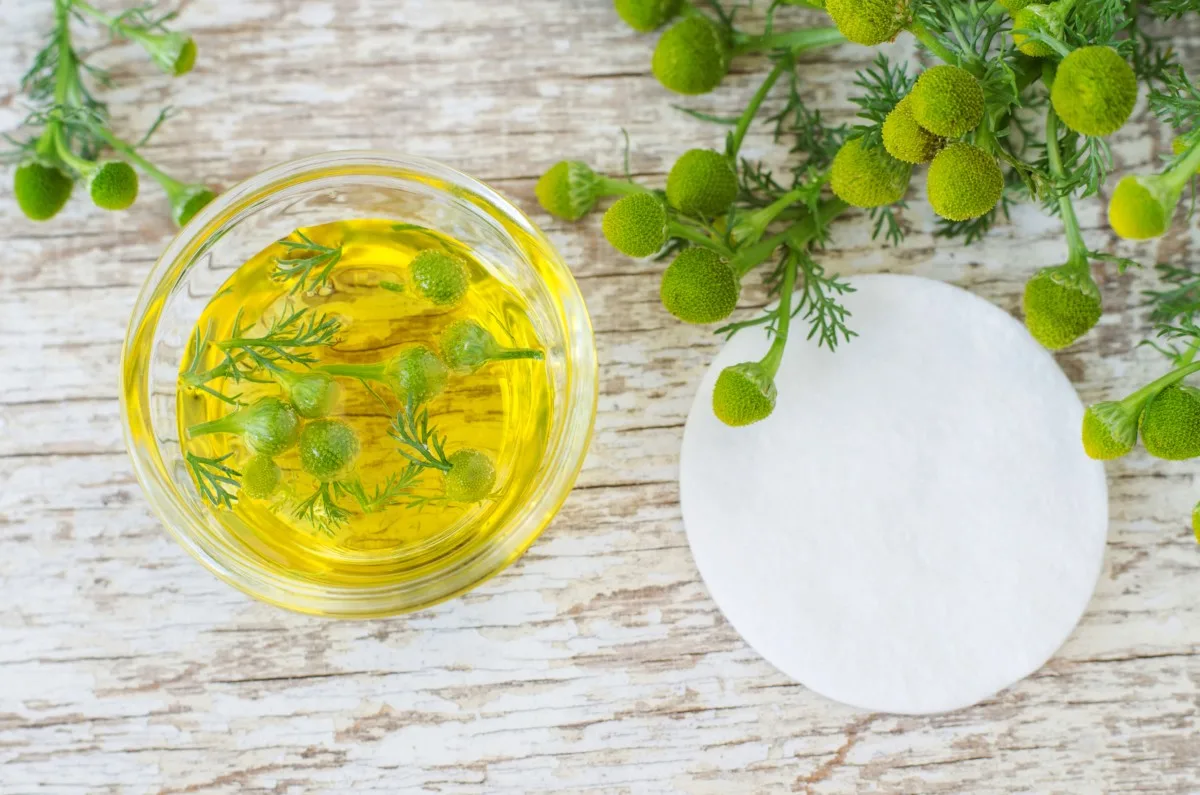
If you suffer from red skin, you may want to give this gentle chamomile and honey facial toner a try. Both the honey and chamomile offer antibacterial properties to help gently control breakouts and soothe irritated red skin. Chamomile is anti-inflammatory and can help to reduce redness.
The problem with so many commercial skincare toners is that they contain alcohol or other ingredients that can inflame or dry your skin, even those specifically made to treat rosacea and red skin. Switching to your own handmade skincare, where you can control the ingredients, can make all the difference.
10. Relaxing Chamomile Bath Bombs
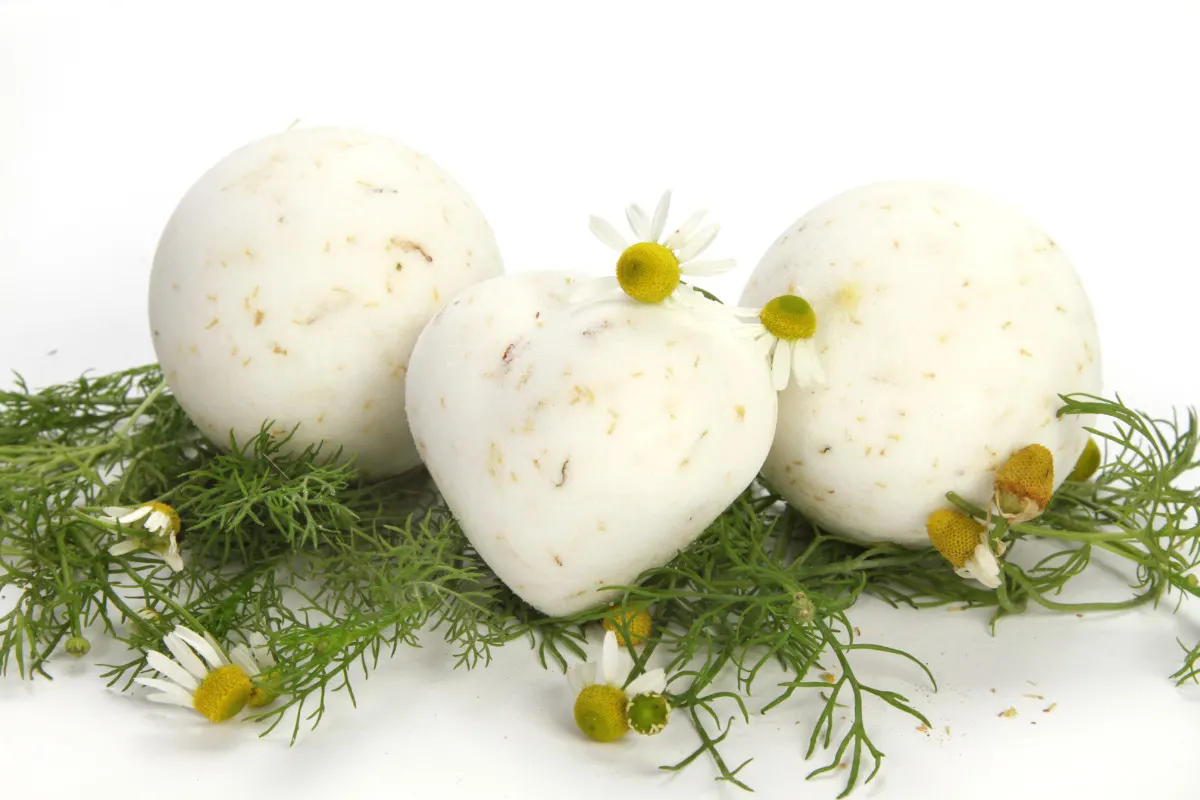
After a hard day working in the garden, there’s nothing better for tired, sore muscles than slipping into a relaxing bath.
Whip up a batch of these skin-softening bath bombs, draw up a bath, light a few candles and feel all your cares melt away.
Don’t forget to make a batch to give as gifts. A homemade gift becomes even more special when you grow one of the main ingredients yourself.
12. Soothing Chamomile Lip Balm
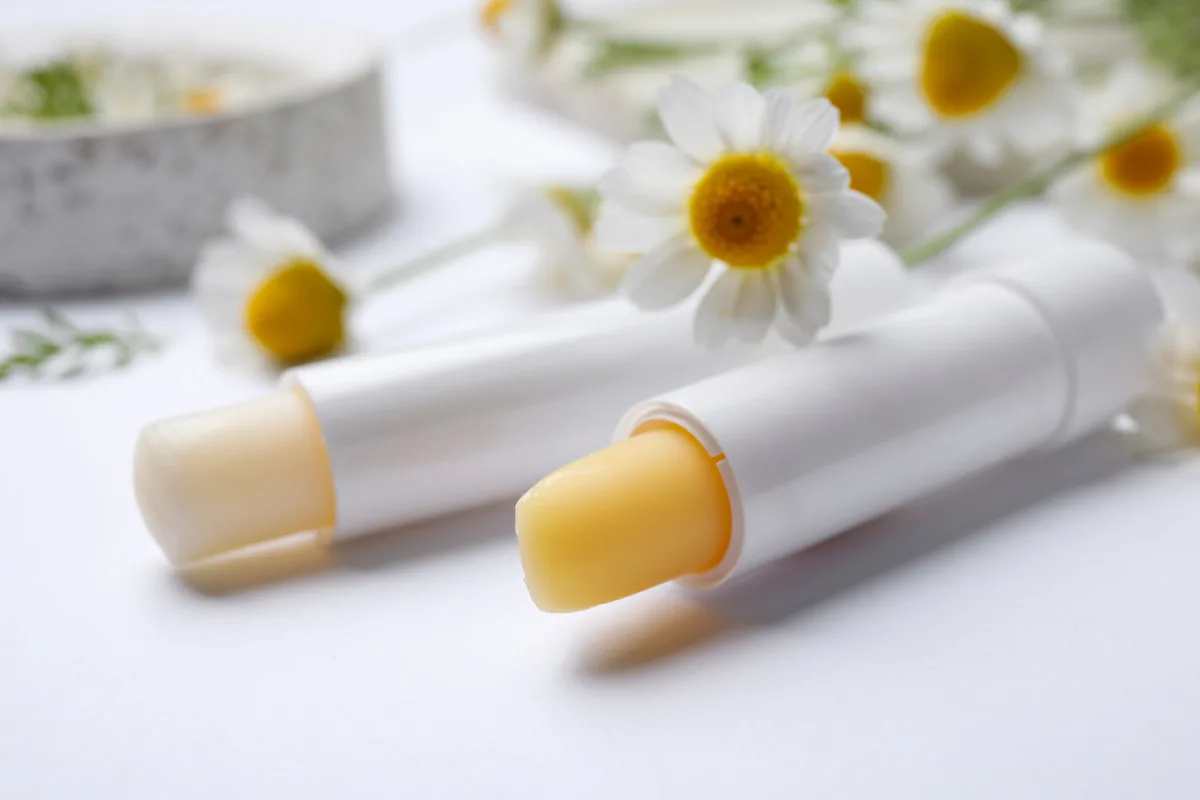
When you’re pampering the rest of your body with your delightful chamomile concoctions, don’t forget your lips. I love making lip balm; it’s one of the easiest things to make when you begin making your own skincare potions. And this recipe is no different.
The sweet apple-scent of chamomile blends beautifully with the lemon oil to make a bright and citrusy lip balm perfect for summer. It goes perfectly in lip balm tubes or tiny tins, whatever you prefer. And the recipe makes enough to keep you and those you love in lip balm for quite a while.
You’ll have a perfectly soft pout for smooching pupper noggins, baby cheeks and sweethearts.
Who should avoid chamomile tea and products?
Anyone with severe pollen-related allergies should avoid chamomile and, of course, infants. While chamomile is generally considered safe, you should always seek out the advice of a physician when treating medical conditions.
Perhaps with all of these brilliant ways to use chamomile, you’ll be tempted to plant more of it in your garden. I think you’ll find room next to the dill and the lemon balm.

Get the famous Rural Sprout newsletter delivered to your inbox.
Including Sunday musings from our editor, Tracey, as well as “What’s Up Wednesday” our roundup of what’s in season and new article updates and alerts.

